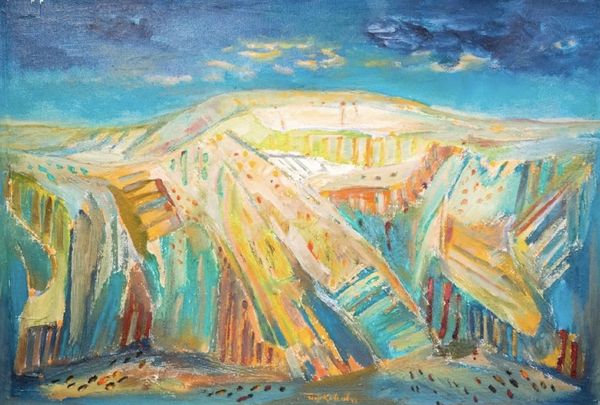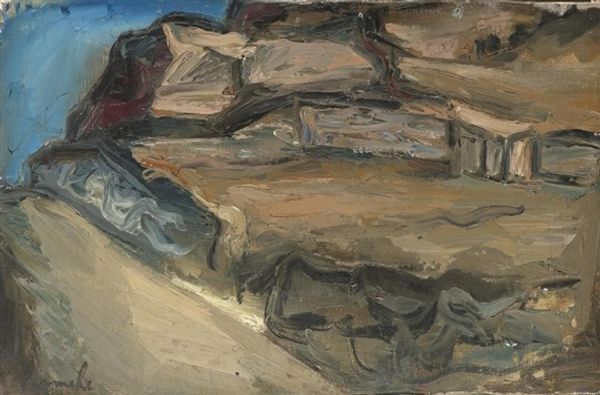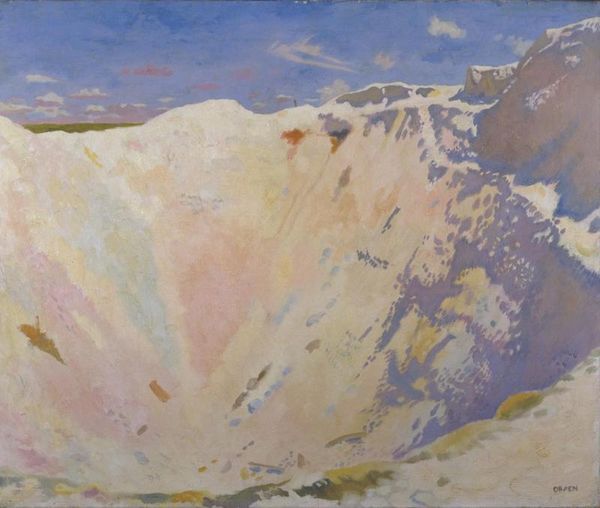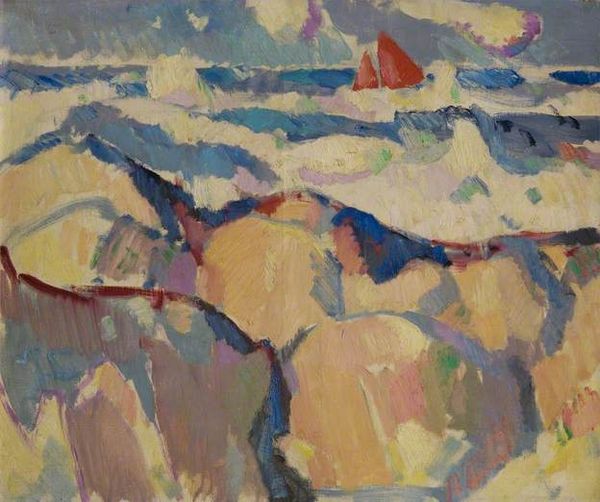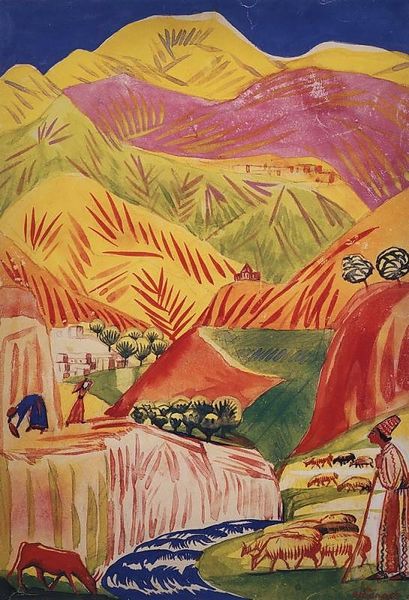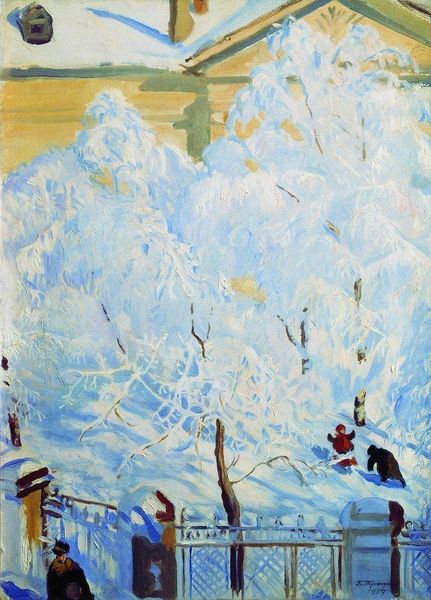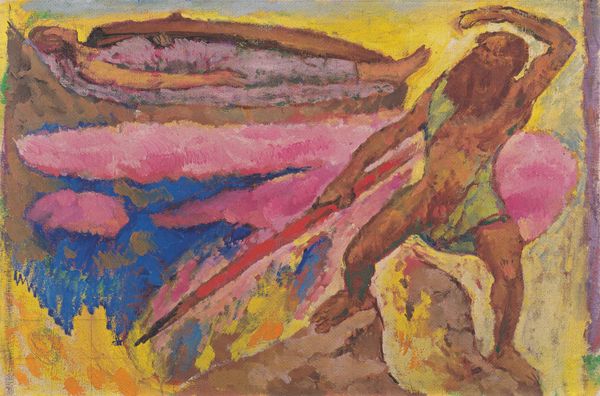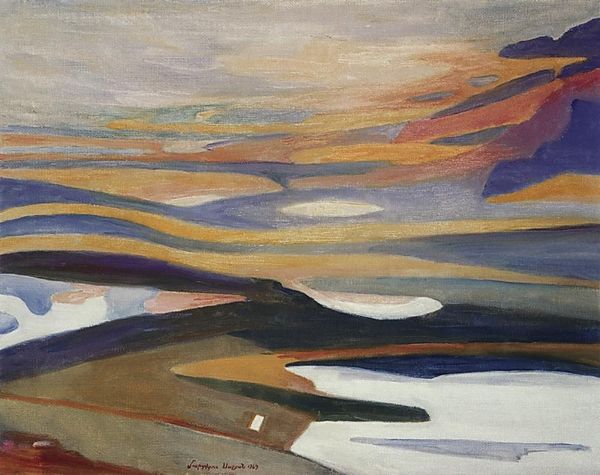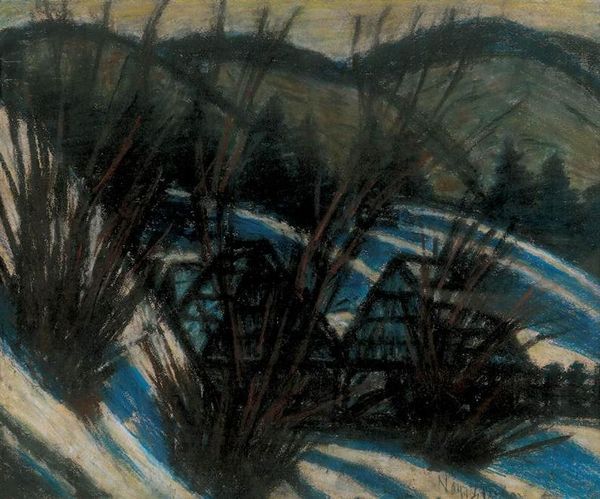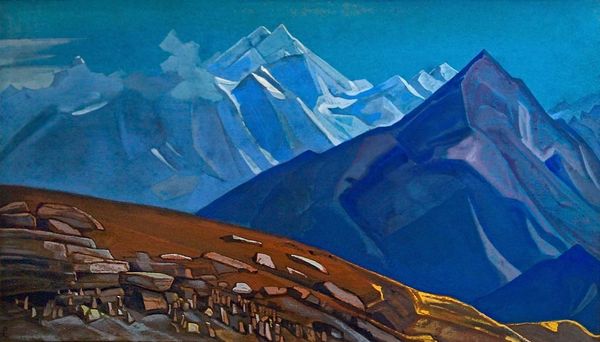
Copyright: Public domain
Curator: Let’s turn our attention to “German Wire, Thiepval,” painted by William Orpen in 1917. Editor: Right away, there's something unsettlingly beautiful about this landscape, isn’t there? The colors are almost pastel, very inviting, until you realize what you're actually looking at. It's jarring. Curator: Indeed. Orpen presents us with a scene of the Somme battlefield. The devastation is almost understated at first glance due to the painting's color palette and composition. Note the large crater dominating the foreground and the scattered, abstracted wire remnants in the background. Editor: It feels like looking at a scar, or a freshly bandaged wound, almost clinically. He hasn't shied away from showing the harsh realities but presents it through a somewhat detached lens. The soft light doesn’t quite reach the depths of what's been experienced here. Curator: Observe how Orpen uses the oil paint to construct the landscape, breaking away somewhat from straightforward realism. The post-impressionist brushstrokes and colour choices give it a dreamlike, or perhaps more accurately, a nightmarish quality. There’s a tension created by this blending of styles. Editor: You're right, that dreamlike quality makes it even more poignant, perhaps like a memory fading, and also distorted. I wonder, did Orpen choose the wire for his subject to contrast its deadly purpose with the deceptive fragility of a drawing rendered with wire as a single, clean line? Curator: That’s insightful. I think Orpen used those elements— color, subject, composition —to prompt us to consider the multifaceted nature of conflict; the brutal, inhumane act committed in this “beautiful” and fertile territory. It’s both compelling and very disconcerting. Editor: It is. A deceptive tranquility pervades, even though the remnants of a terrible, brutal conflict are scattered all around. Even after all this time, it certainly keeps talking. Curator: Precisely. Orpen invites us to engage with the landscape critically, to confront both its beauty and its sorrow. Editor: I am leaving here pondering a landscape of conflict that continues, like memory, to surprise and provoke, with something beautiful emerging out of such pain and ruin.
Comments
No comments
Be the first to comment and join the conversation on the ultimate creative platform.
